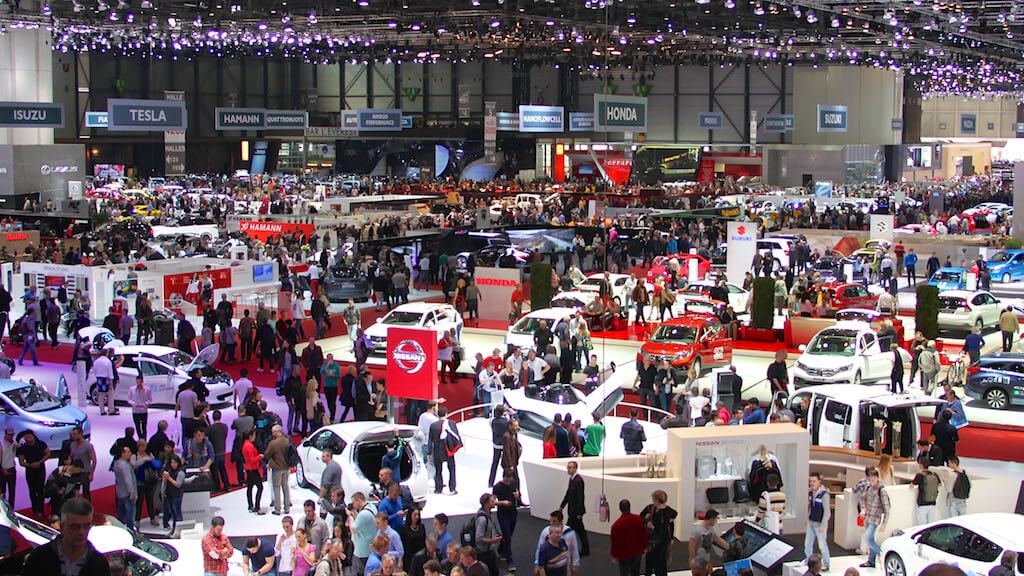 In December 2014, car sales increased in all major regions of the world with growth fastest in China, India and the USA. Europe also had a positive year with the market in the EU expanding for the first time in seven years. Although car sales were positive in Brazil and Russia in December 2014, full year numbers were down. In 2014, sales in India were flat while new passenger vehicle registrations in Japan increased by 3%. Growth in the USA and Europe was over 5% while China again led the way with a 13% increase in car sales in 2014.
In December 2014, car sales increased in all major regions of the world with growth fastest in China, India and the USA. Europe also had a positive year with the market in the EU expanding for the first time in seven years. Although car sales were positive in Brazil and Russia in December 2014, full year numbers were down. In 2014, sales in India were flat while new passenger vehicle registrations in Japan increased by 3%. Growth in the USA and Europe was over 5% while China again led the way with a 13% increase in car sales in 2014.
Worldwide Car Sales in 2014 (January to December)
New light vehicle registrations in different major regions of the world as monitored by the VDA were as follows during the full 2014 calendar year:
| Region | Dec 2014 | % Change | Jan-Dec 2014 | % Change | Jan-Dec 2013 |
| Europe (EU+EFTA) | 997,200 | 4.9 | 13,006,500 | 5.4 | 12,308,200 |
| Russia* | 270,700 | 2.4 | 2,491,400 | -10.3 | 2,777,400 |
| USA* | 1,498,200 | 10.7 | 16,435,300 | 5.8 | 15,531,600 |
| Japan | 360,300 | 0.3 | 4,699,600 | 3 | 4,562,300 |
| Brazil* | 354,000 | 5.3 | 3,333,400 | -6.9 | 3,579,900 |
| India | 209,000 | 12.4 | 2,570,500 | 0.7 | 2,554,000 |
| China | 1,969,100 | 19.2 | 18,368,900 | 12.7 | 16,303,700 |
| Source: VDA | 60,905,600 | 57,617,100 | |||
| *USA, Brazil and Russia include light vehicles (trucks). % Change refers to same period the previous year. | |||||
Strong Car Sales in China in December 2014
China has been the largest car market most months during 2014 but sprung a final surprise with very strong growth in December. New passenger vehicle registrations in China increased by 19.2% in December 2014.
In 2014, new car sales in China increased by nearly two million cars to 18,368,900 cars – a 12.7% increase over 2013. German premium car brands mostly outperformed the overall market for another year of spectacular growth results.
Positive Car Sales in India and Japan in 2014
In Asia’s other two major car markets, the year ended positively after a changing year. In Japan, first quarter car sales were very strong in anticipation of a tax hike on April 1, 2014. Since then, the market has been mostly negative although often less so than was feared at the start of the year. Japan ended the year with a 3% overall increase in new passenger vehicle registrations but the outlook for 2015, especially in view of the very strong start to 2014, is negative.
India had a strong December with sales up 12%. However, car sales were negative many months in 2014 with the complete total up by less than a percentage point. However, India did overtake the Russian market by size in 2014.
Strong Car Sales in the USA in December 2014
The US light vehicle market had a difficult start to 2014 due to extreme winter weather but has been positive for most of the year. Sales in December 2014 were up 11% with lower fuel prices encouraging the market.
In December 2014, light vehicle sales (trucks and cars) increased by 11% to 1.5 million vehicles. Over the full year, sales increased by 6% to 16.4 million units – an increase of 60% since the crisis year in 2009.
In Brazil light truck sales increased by 5% in December 2014. The increase is largely seen as frontloading to avoid an increase in taxes in early 2015. For the year as a whole, car sales in Brazil were down 7%.
Car Sales Growth in Europe in 2014 (Full Year)
In 2014, the European Union and EFTA recorded the first annual sales growth since 2007. Car sales increased by 5.4% in 2014 to just over 13 million cars. Only six countries saw a decline in sales with the five biggest markets all recording positive growth, although in the case of France only just.
The UK alone contributed a third of the increase in sales in the EU during 2014 while Spain also saw a large increase in car sales. The British car market is poised to overtake the Russian market as the second biggest in the larger European region.
Sales of light vehicles in Russia increased slightly in December 2014 but this was probably due to rushed buying in anticipation of inflation and negative exchange rate effects in the near future. In 2014, the Russian car market shrunk by 10% and analysts expect a larger contraction in 2015.
